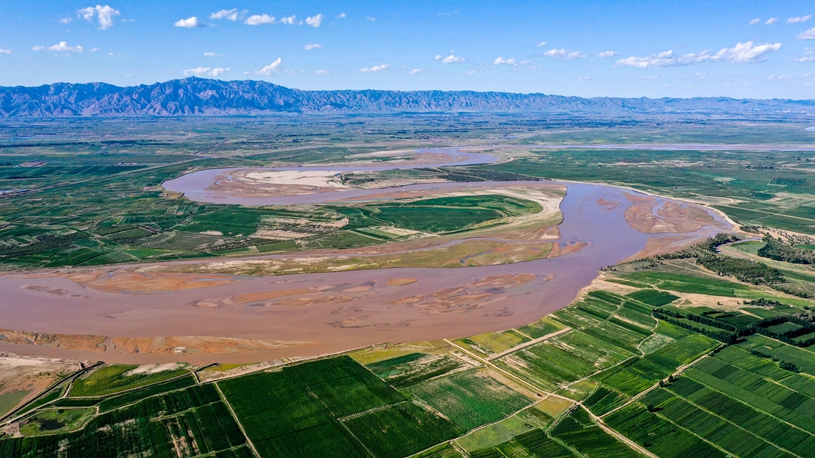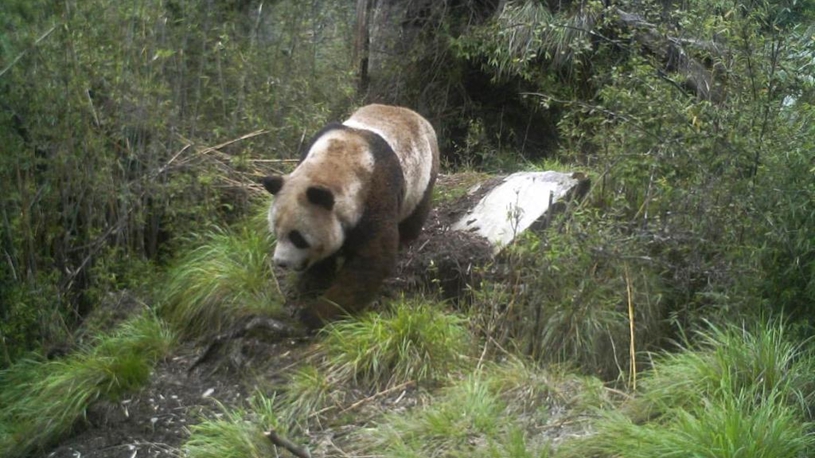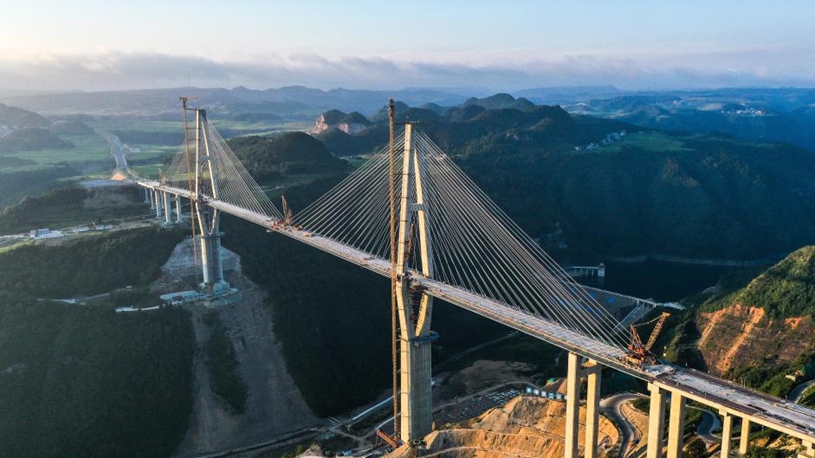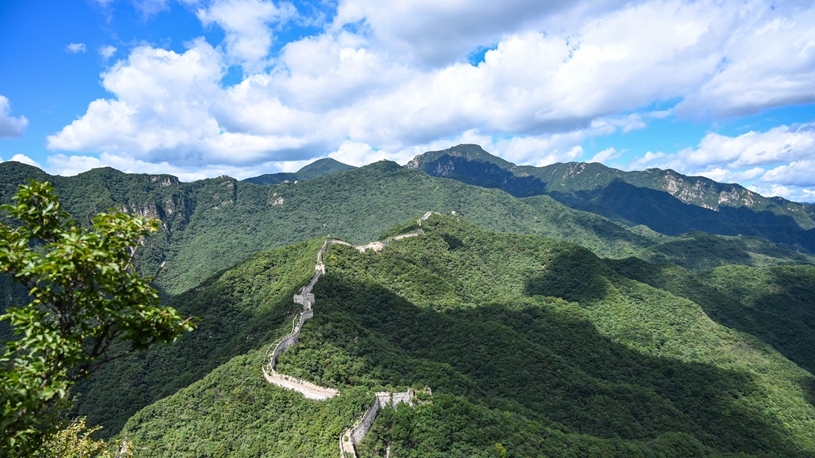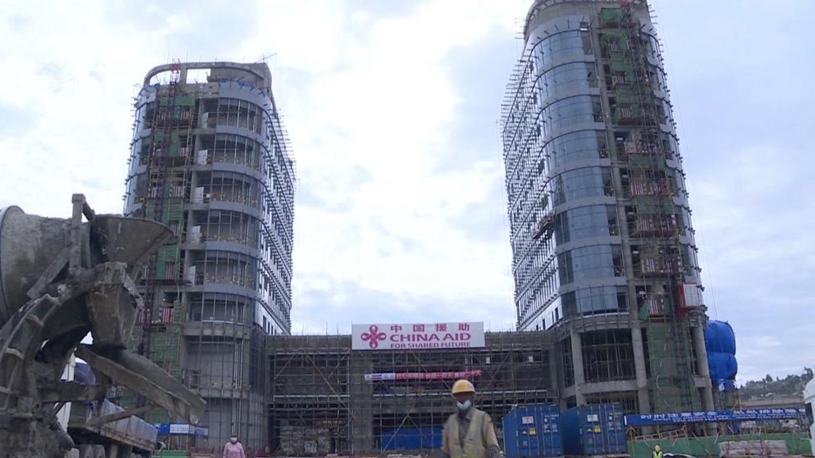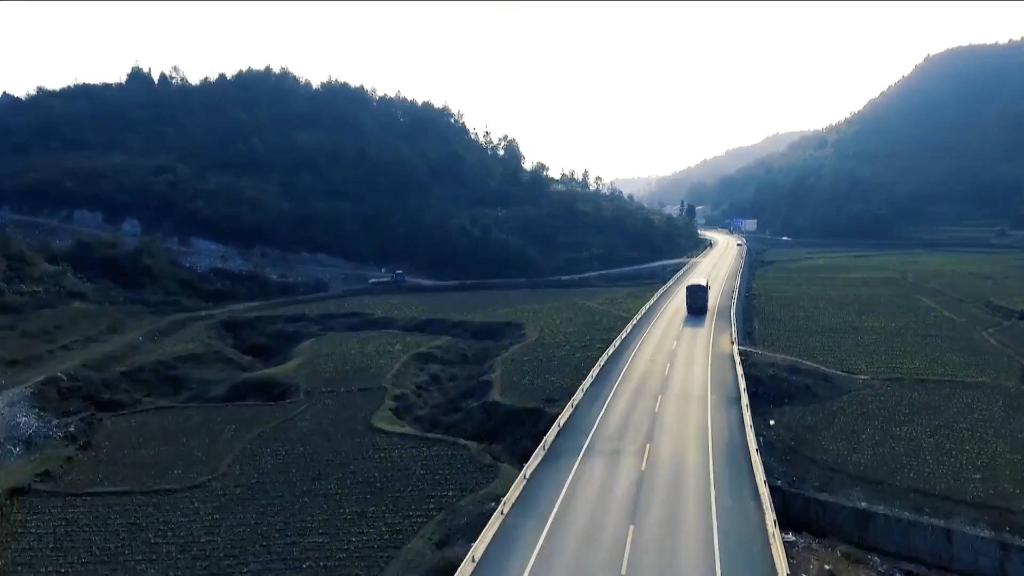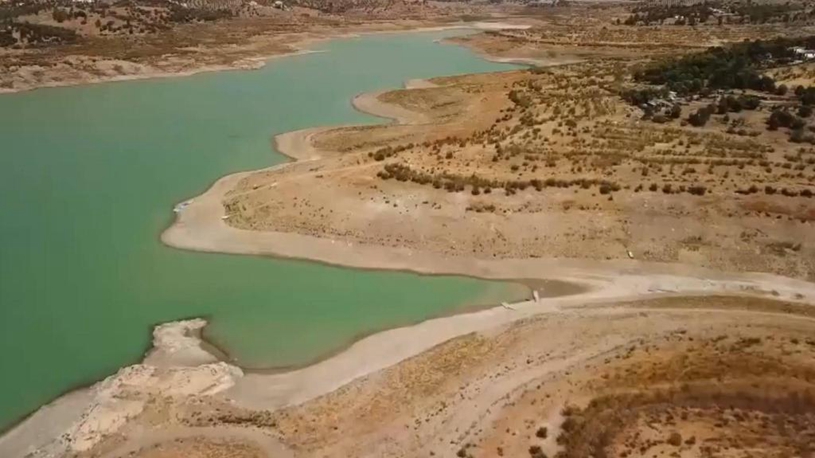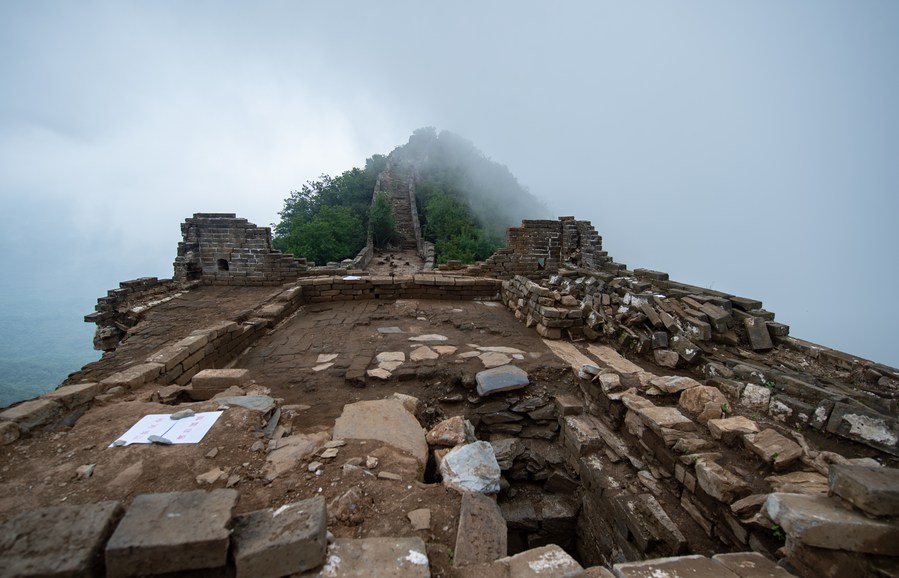
Photo taken on Aug. 17, 2022 shows a research-based restoration part of the Jiankou section of the Great Wall in Beijing, capital of China. (Xinhua/Chen Zhonghao)
BEIJING, Aug. 22 (Xinhua) -- After more than a month of archaeological work, Chinese archaeologists of multiple disciplines have been able to rebuild a scenario of soldiers in the Ming Dynasty (1368-1644) guarding a section of the Great Wall.
Shang Heng, head of the archaeological project being carried out at the Jiankou section of the Great Wall in Huairou District of Beijing, said the multidisciplinary research in an area of 2,000 square meters has led to a trove of findings such as fire pits, stove sites and pots, plates, bowls, scissors and shovels used by soldiers guarding the Great Wall during the Ming Dynasty.
Dubbed as one of the most dangerous parts of the Great Wall, hikers prefer to call the Jiankou section "the wild Great Wall."
Originally built during the Tang Dynasty (618-907) and restored during the Ming Dynasty, the Jiankou Great Wall is connected to the Mutianyu Great Wall to the east and the Huanghuacheng Great Wall to the west.
Shang said, since last year, the Beijing municipal authority has shifted the focus of protecting the Great Wall from general repairs to research-oriented.
At a watchtower of the Jiankou Great Wall, animal bones were found through animal archaeology. The remains of a cannon were also found.
"The living scenario rebuilt with the relics conforms to the records in historical documents. For example, there were about five soldiers on guard in an enemy-watching tower on the Great Wall, where there was a fire pit that could warm a space for two soldiers to rest, while the other three people were on duty," Shang said.
During the research, archaeologists also discovered a secret door under the Great Wall.
"We speculate that Ming Dynasty scouts could conduct reconnaissance through this secret pass under the Great Wall to observe the enemy's situation," Shang said.
During the on-site investigation, experts in ancient architecture, materials and botany were involved.
"In the past, when damages were found on the Great Wall, the authorities immediately sent workers to repair, during which 'involuntary damages' were also likely to hurt the cultural relics," Shang said.
He added that with experts sharing the information from all disciplines, in the future, repairs can be worked on while researchers carry out digital restoration.
The Great Wall has been plagued with "illnesses" such as water erosion. The multidisciplinary team has come up with a plan to overcome such problems.
"When it rains, gravel and sediment block the drainage outlet of the defense structure, which is likely to cause parts of the wall to collapse. Therefore, such blockages need to be dredged in time. The experts have measured and designed a drainage channel to help prevent the risks," Shang said.
The Great Wall is a UNESCO World Heritage Site, consisting of many interconnected walls. Beijing has planned to comprehensively protect and develop the Great Wall Cultural Belt, with a total area of 4,929.29 square km, which includes both heritage protection and ecological conservation. ■

